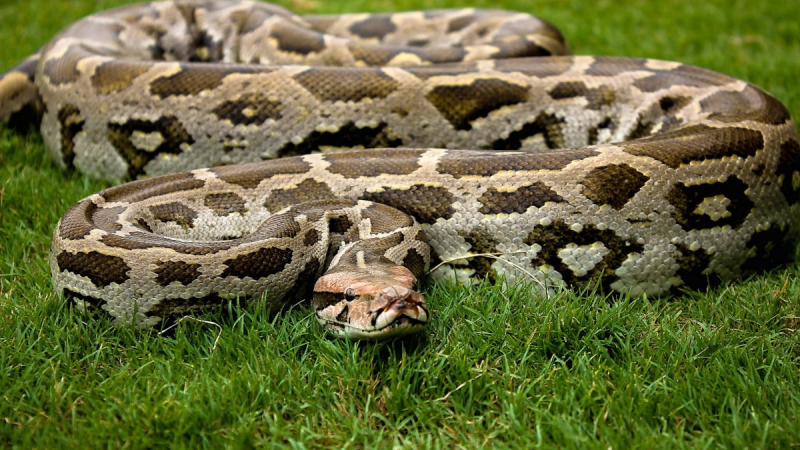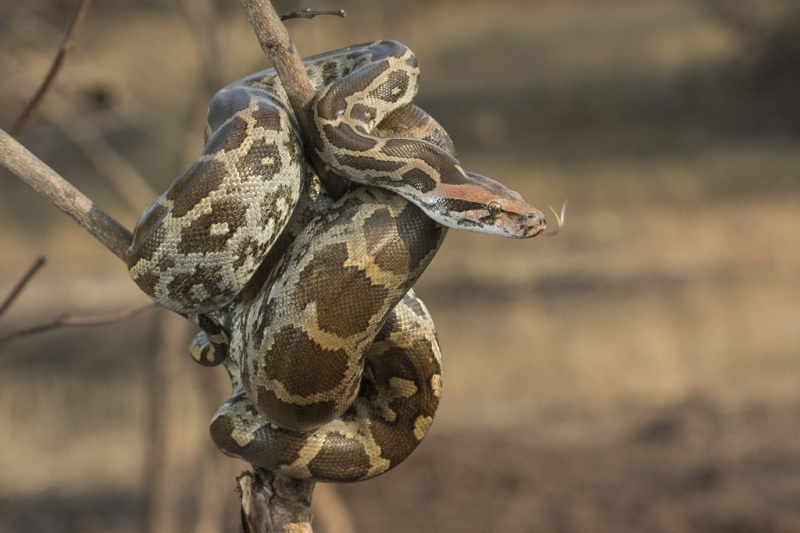Indian python
The tropical and subtropical areas of the Indian subcontinent and Southeast Asia are home to the big, nonvenomous Indian python species. Other names for it include black-tailed python. Asian and Indian rock pythons are both snakes. It typically grows to a length of 3 m and is normally lighter in color than the Burmese python. One of the two largest nonvenomous python species found in India is the Indian rock python, also known as the Ajgar. The other is the Asiatic reticulated python. Because of how they kill, ajgar is regarded as one of the deadliest wild animals.
The color pattern of the rock python is whitish or yellowish, with blotched patterns that range in hue from tan to dark brown. Terrain and habitat have an impact on this. The Deccan Plateau and the Eastern Ghats often have lighter specimens than the hill forests of the Western Ghats and Assam. Pythons are all non-venomous snakes.
Even in their natural environment, they are sluggish and slow-moving. They are shy and rarely try to attack when assaulted. Locomotion typically involves "walking on one's ribs" and moving the body in a straight line. They have great swimming abilities and seem right at home in the water. They may spend several minutes completely submerged in water, but they normally prefer to stay close to the bank.













